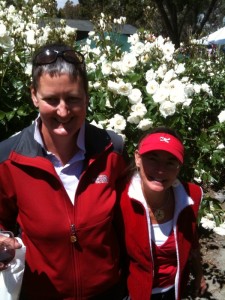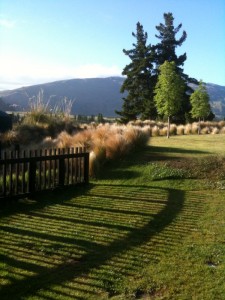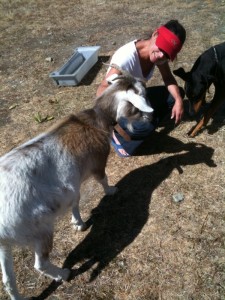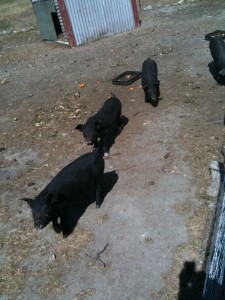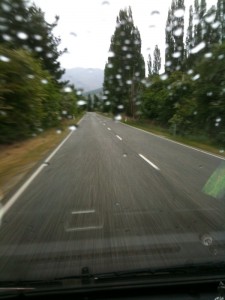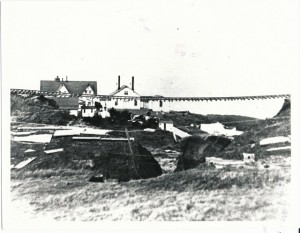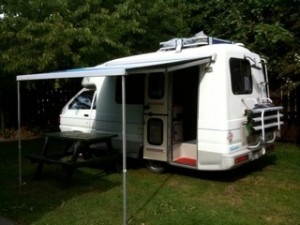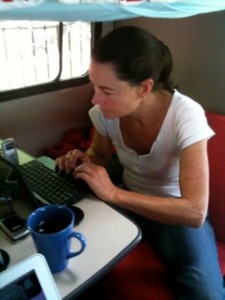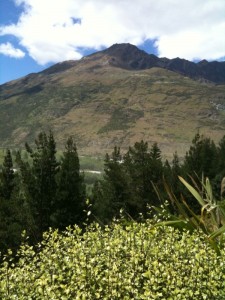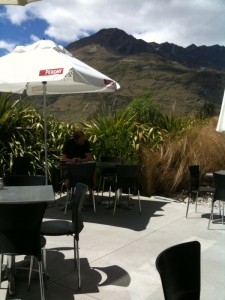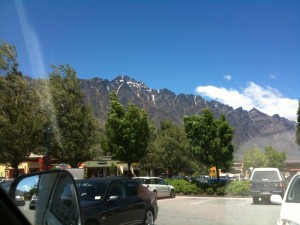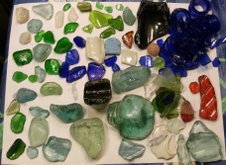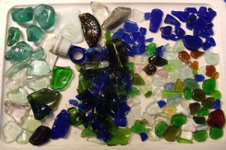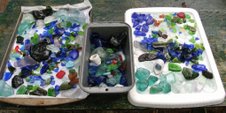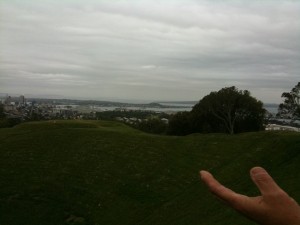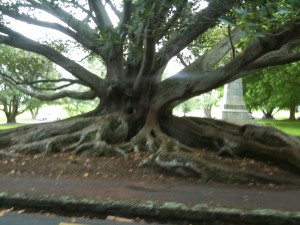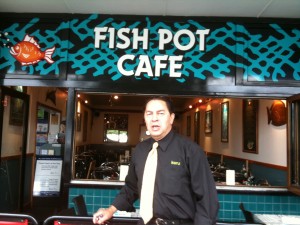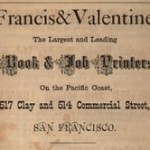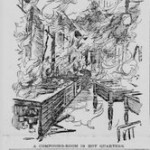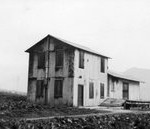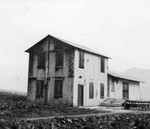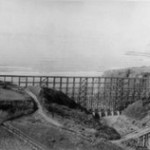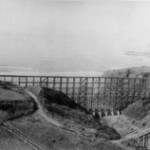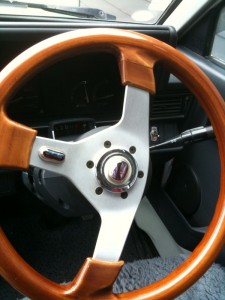
That’s jewelry designer Paula Martin’s steering wheel and we’ve been continuing our adventure. I stayed overnight at Falling Leaves B&B at romantic Lake Wanaka (where the owner, Jo’s, water comes from her own well and tastes delicious. I can’t say I’ve ever enjoyed such good, pure water.) Paula, who is dedicated to her art and commitments, continued on to remote Nokomai, the scene of the last “fete,” reached by driving down a very long dusty road off a main highway quite a ways south of Queenstown.
The next morning Jo drove me in her jeep from Lake Wanaka to Nokomai via the spectacular Crown Range route 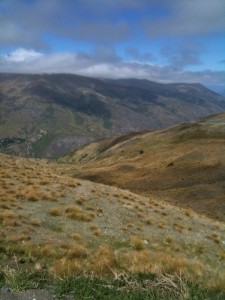 a narrow two-lane road with views not to missed. During the ride through the high mountains, Jo regaled me with stories of the Kiwi, a naughty bird that gets bored living near the snowy mountains and entertains itself by disturbing the material possessions of humans. The Kiwi bird enjoys removing windshields from cars, laces from shoes, and if there’s a laptop accessible, they will take it away. I hoped I wouldn’t encounter the Kiwi but I was assured the bird was “funny.”
a narrow two-lane road with views not to missed. During the ride through the high mountains, Jo regaled me with stories of the Kiwi, a naughty bird that gets bored living near the snowy mountains and entertains itself by disturbing the material possessions of humans. The Kiwi bird enjoys removing windshields from cars, laces from shoes, and if there’s a laptop accessible, they will take it away. I hoped I wouldn’t encounter the Kiwi but I was assured the bird was “funny.”
No wind when we arrived at the fete in Nokomai 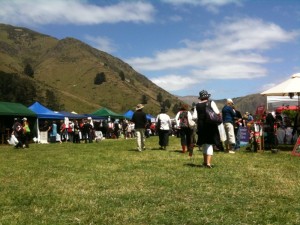 sponsored by “CRT,” a farmer cooperative operating in the South Island. Remember, the day before we were at Queensbury when mammoth-sized winds hit and most of the exhibitors had to pull up their gazebos and exit quickly. Not so at Nokomai where the weather was perfect, sunny and warm. As Paula says, when the weather’s good, people open their wallets and she did quite well on Saturday.
sponsored by “CRT,” a farmer cooperative operating in the South Island. Remember, the day before we were at Queensbury when mammoth-sized winds hit and most of the exhibitors had to pull up their gazebos and exit quickly. Not so at Nokomai where the weather was perfect, sunny and warm. As Paula says, when the weather’s good, people open their wallets and she did quite well on Saturday.
AT 5:30 p.m. we left Nokomai, driving down the dusty road to the main “highway,” and headed south for the funky Riverton, a town that should definitely be scouted for scenes in movies. Paula was excited about Riverton because she had lived there way back and told me about the “Globe Hotel,” where I would be staying. She would be sleeping in the camper van in the back of the very hotel that is for sale.
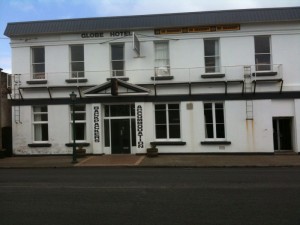
Riverton remains the kind of place that has not been developed yet. This is Scott 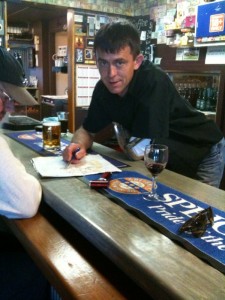 the owner’s son who works at the Globe Hotel’s bar.
the owner’s son who works at the Globe Hotel’s bar.
The next morning, Sunday, we had breakfast and coffee at Mrs. Clark’s Cafe in Riverton. 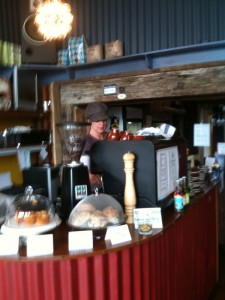 Next we headed for the Fjords Great Views Holiday Park in Te Anua. Along the way we stopped at unique beaches with names like Monkey Rock where we met Mr. Watson who owns the historic house called called “the Turrets.”
Next we headed for the Fjords Great Views Holiday Park in Te Anua. Along the way we stopped at unique beaches with names like Monkey Rock where we met Mr. Watson who owns the historic house called called “the Turrets.” 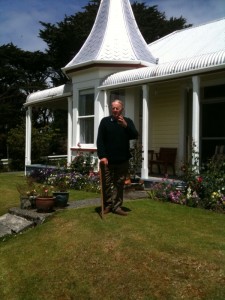
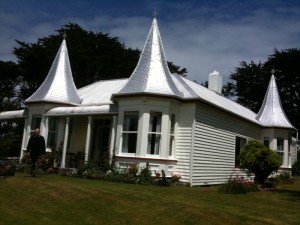 Paula had seen the turret house many times on her working drives during the Christmas season–but she had never gotten close enough to knock on the door. This time we did and we met Mr. and Mrs. Watson, who five grown children and 16 grandchildren. Mr. Watson’s passion is the history of the home he has lived in since 1960. He married the following year. “The Turrets” has been featured in local history books and newspaper articles and Mr. Watson loves giving tours of the house and garden both Watsons have lovingly tended. In the darkened hallway there are oil paintings of Mr. Watson’s ancestors and he knows the stories behind all the nearby beaches like Monkey Rock (named so, because during the gold mining days, food and supplies were shipped down the coast and raised up a big rock with a monkey wench. Think I got that one right.
Paula had seen the turret house many times on her working drives during the Christmas season–but she had never gotten close enough to knock on the door. This time we did and we met Mr. and Mrs. Watson, who five grown children and 16 grandchildren. Mr. Watson’s passion is the history of the home he has lived in since 1960. He married the following year. “The Turrets” has been featured in local history books and newspaper articles and Mr. Watson loves giving tours of the house and garden both Watsons have lovingly tended. In the darkened hallway there are oil paintings of Mr. Watson’s ancestors and he knows the stories behind all the nearby beaches like Monkey Rock (named so, because during the gold mining days, food and supplies were shipped down the coast and raised up a big rock with a monkey wench. Think I got that one right.
On the way to Te Anua, which isn’t exactly on the West Coast, but sort of close by, we stopped at a place called Tuatapere, where I had a little lunch, a cornish pastie, coffee and dessert.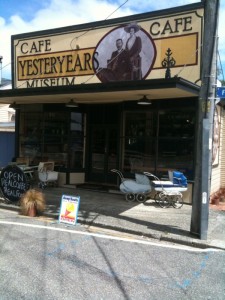
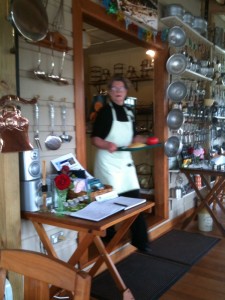
Paula drove us off the road to see some incredible beaches with names like Cozy Nook and Monkey Rock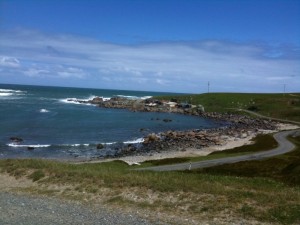 You’ve probably heard that New Zealand looks like Northern California, and there are “familiar sights,” but here in NZ all is more more natural, more raw as Northern California beaches may have appeared a century earlier. I’ve never been around so much nature in my life.
You’ve probably heard that New Zealand looks like Northern California, and there are “familiar sights,” but here in NZ all is more more natural, more raw as Northern California beaches may have appeared a century earlier. I’ve never been around so much nature in my life. 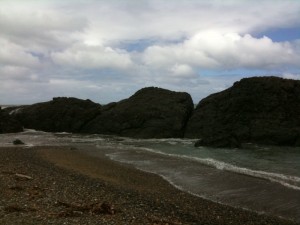
Last night which was Sunday in NZ, I stayed at the Fjordland Great Views Holiday Park—if you’ve never stayed in a motor park, NZ must have the finest. This is my first experience sleeping in a camper van and sleeping in rooms with and without bath at the motor parks we visit. Fjordland Great Views at Te Anau is stunning. I stayed in cabin #10. Behind my room which had a double bunk, tv and portable heater, there was a view of a field of sheep. [Of course, sheep can be seen all over NZ; still, to have them so close to my cabin was a visual treat.] What bowled me over was the ladies loo. Could have been part of a luxury hotel. 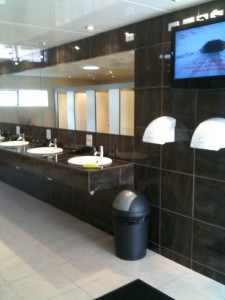
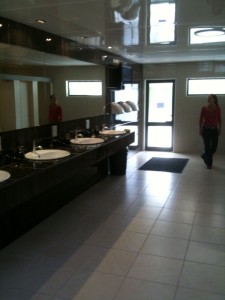 There is a heated floor and it’s been pretty cold in the mornings when I wake up–that icy kind of cold that comes with lakes after the snow has melted from the mountains. Paula Martin knows the motor parks and which ones are the finest; she has made friends with many of the owners as well and knows which ones take their business seriously. Fjord Great Views Holiday Parks is the most impressive motor park I’ve stayed at on this unpredictable adventure.
There is a heated floor and it’s been pretty cold in the mornings when I wake up–that icy kind of cold that comes with lakes after the snow has melted from the mountains. Paula Martin knows the motor parks and which ones are the finest; she has made friends with many of the owners as well and knows which ones take their business seriously. Fjord Great Views Holiday Parks is the most impressive motor park I’ve stayed at on this unpredictable adventure.
Later today we head back to the tiny place called Arrowtown where Paula has an appointment with a store owner. She made a good sale this morning here in Te Anau.

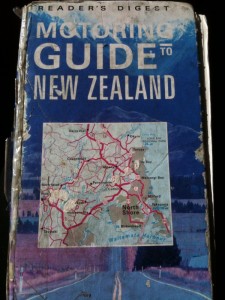
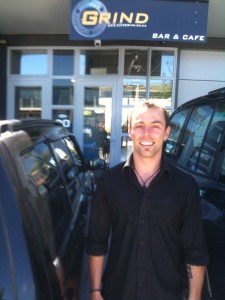 who owns “the Grind<‘ a cafe-bar with “the Remarkables” as a backdrop.
who owns “the Grind<‘ a cafe-bar with “the Remarkables” as a backdrop.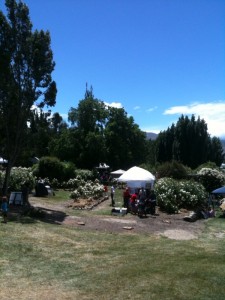
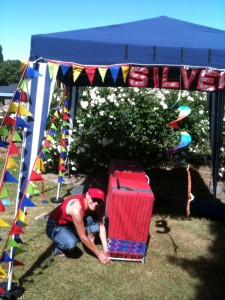
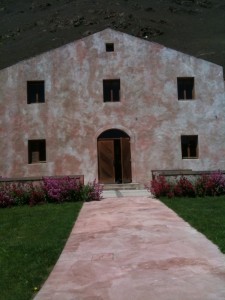 At Chard, Dave is the man in charge of wine tastiing.
At Chard, Dave is the man in charge of wine tastiing. 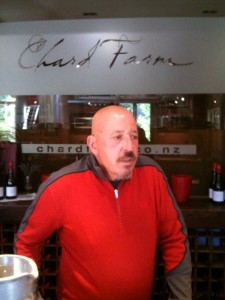 Nearby was the bridge where bungy jumping started.
Nearby was the bridge where bungy jumping started. 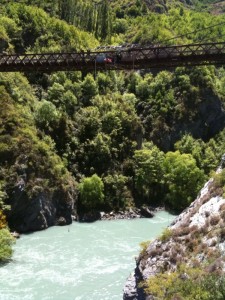 On the flight from Auckland to Queenstown, I sat [way in the back of the plane] next to
On the flight from Auckland to Queenstown, I sat [way in the back of the plane] next to